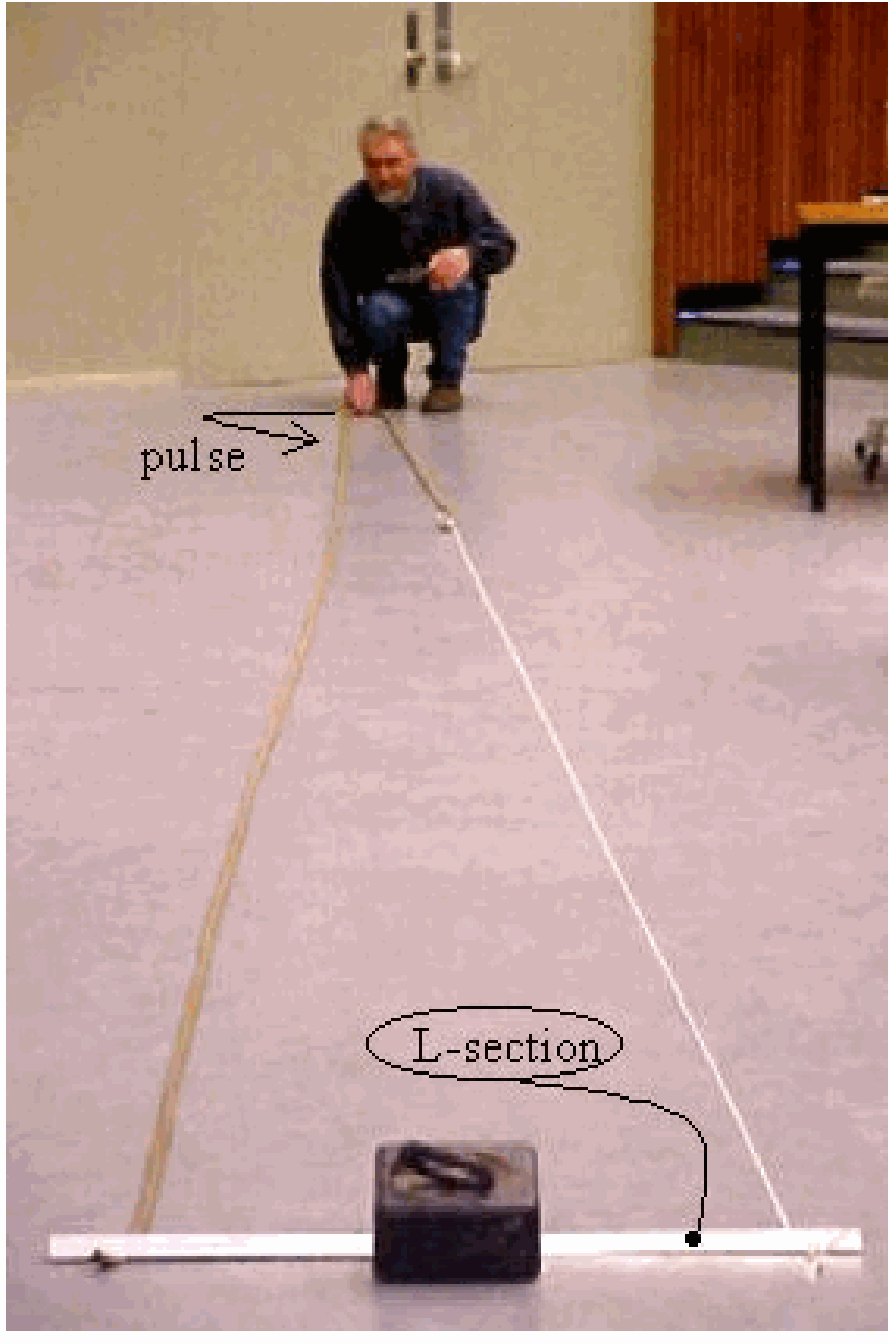05 Transverse Traveling Wave (1)#
Aim#
To show a traveling wave and the inverse relationship between frequency and wavelength.
Subjects#
3B10 (Transverse Pulses and Waves)
Diagram#

Fig. 342 .#
Equipment#
Heavy rubber hose (\(l=10 \mathrm{~m}\)).
Heavy weight (\(m=25 \mathrm{~kg}\)).
Tape.
Camera.
Projector.
Presentation#
Lay the piece of hose in a straight line on the floor in front of the lecture room. On the floor, this straight line is marked by tape. At one end the hose is fixed by the heavy weight.
Now create a sine wave by shaking the free end of the hose vigorously in a horizontal direction. Give the hose that much tension and amplitude that the wave amplitude is damped to zero when it reaches the fixed end of the hose. Then you don’t have to worry about reflections.
The traveling wave can be observed, and its name “traveling wave” will be clear. By shaking the end of the hose at different frequencies you can show the inverse relationship between frequency and wavelength.
Remarks#
To get a “nice” wave make sure that you drive the rubber hose at the same amount of amplitude at both sides of the taped line. Practicing before demonstrating is necessary.
To get a good view of the traveling wave, a camera is placed at the fixed end, so that a picture can be projected by the Projector as shown in the Diagram.
Sources#
Ehrlich, Robert, Turning the World Inside Out and 174 Other Simple Physics Demonstrations, pag. 126
Friedrich, Artur, Handbuch der experimentellen Schulphysik, part 1, Schwindungen, Wellen, Schall, Ultraschall, pag. 74
Mansfield, M and O’Sullivan, C., Understanding physics, pag. 307-310
